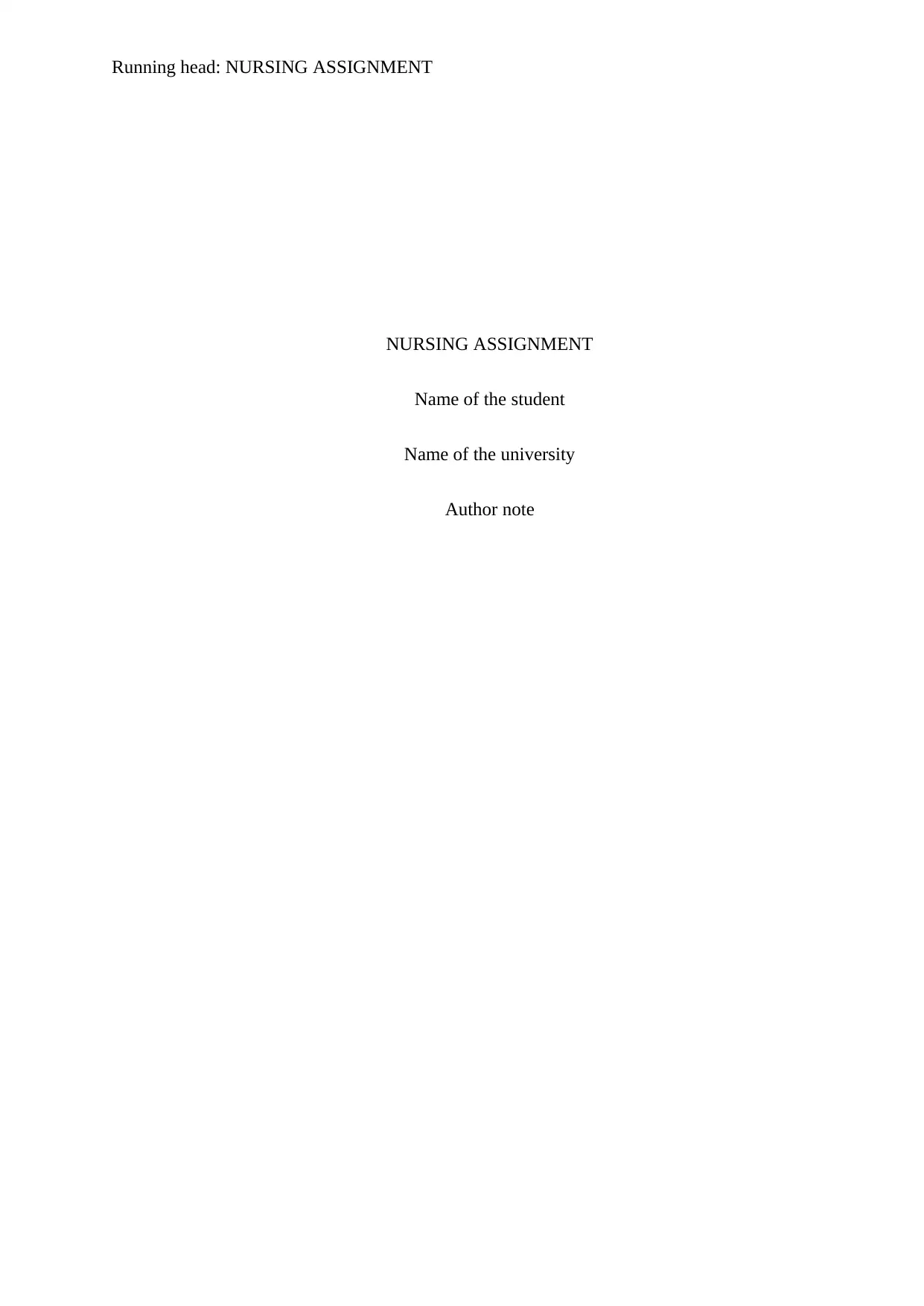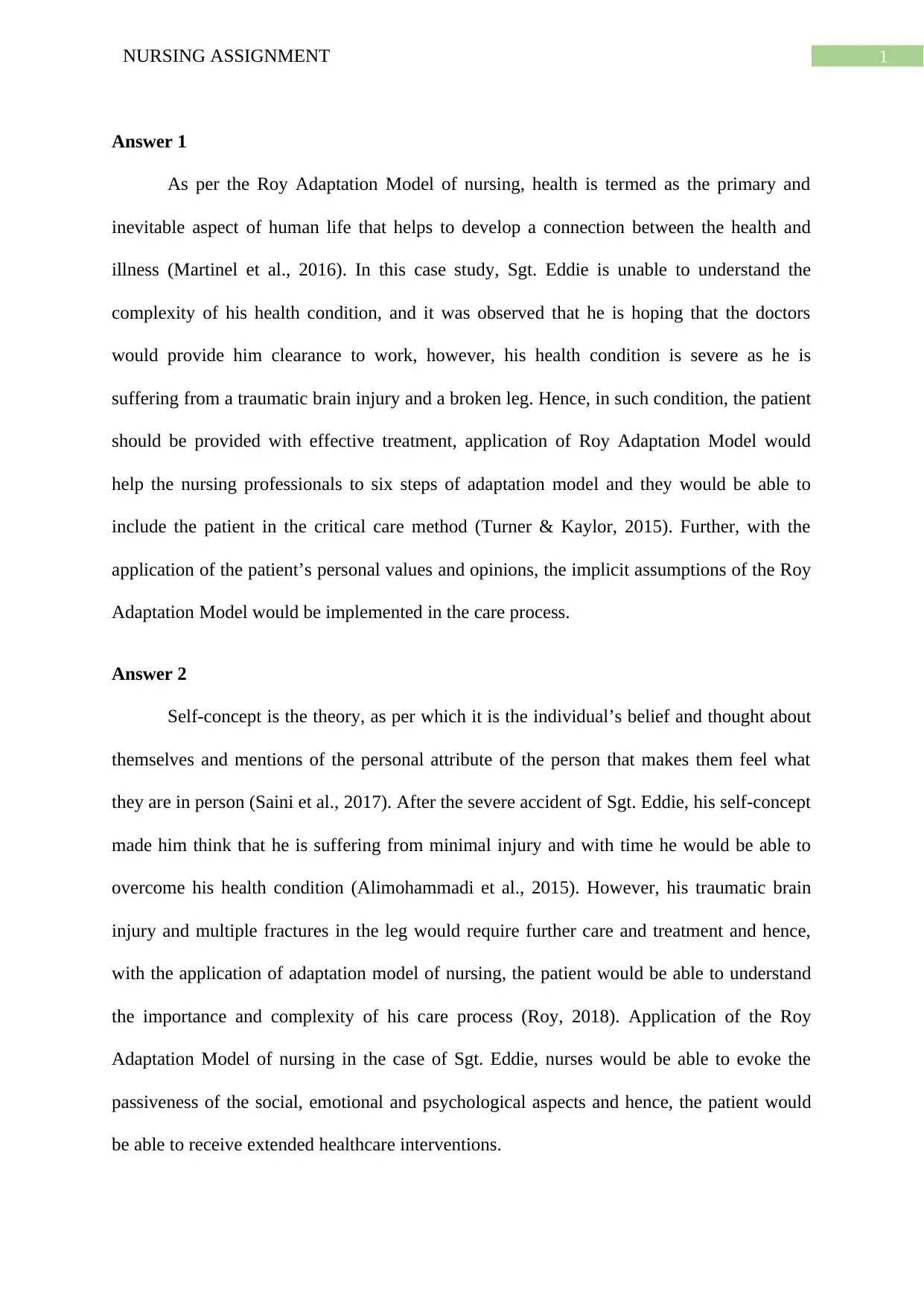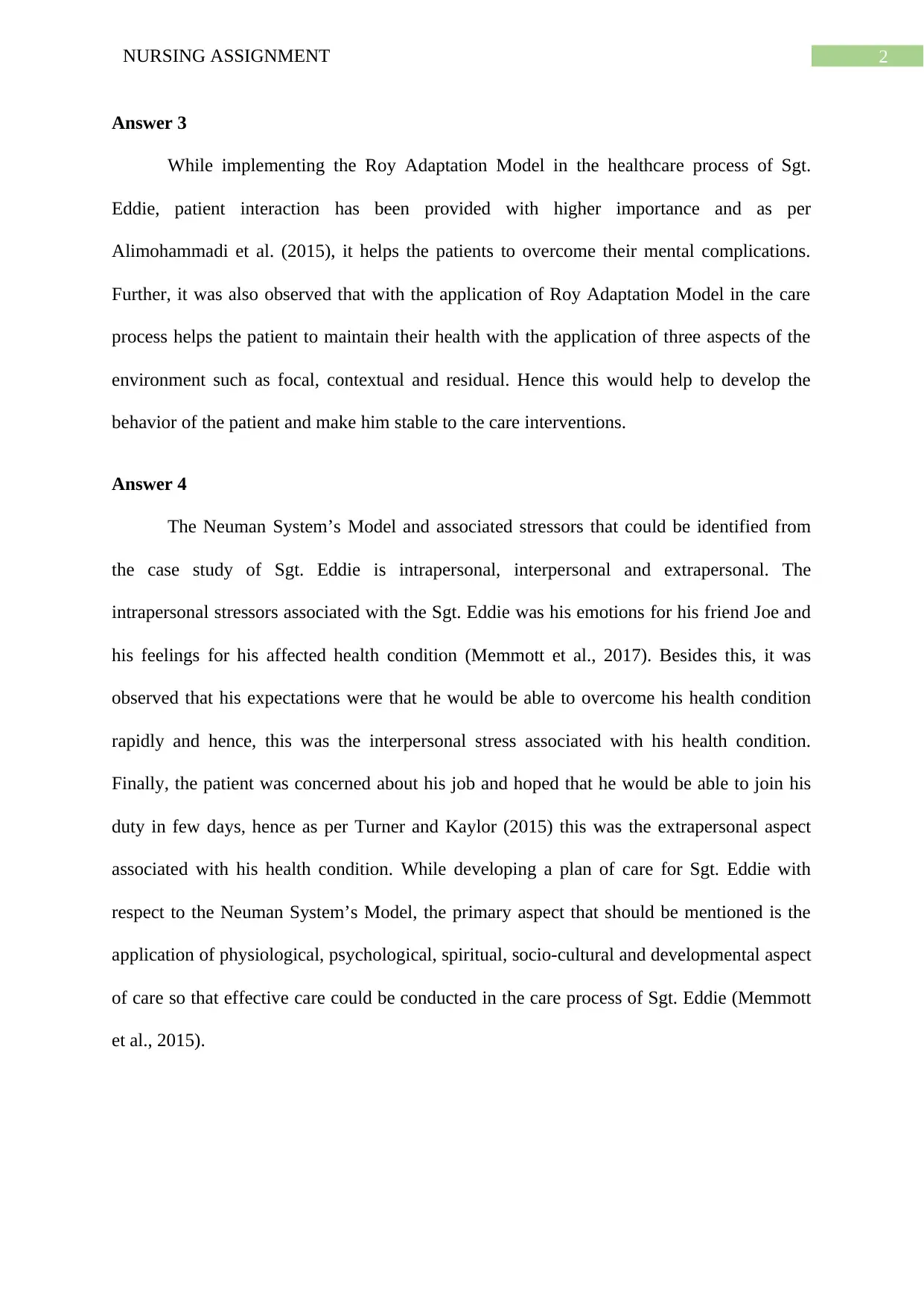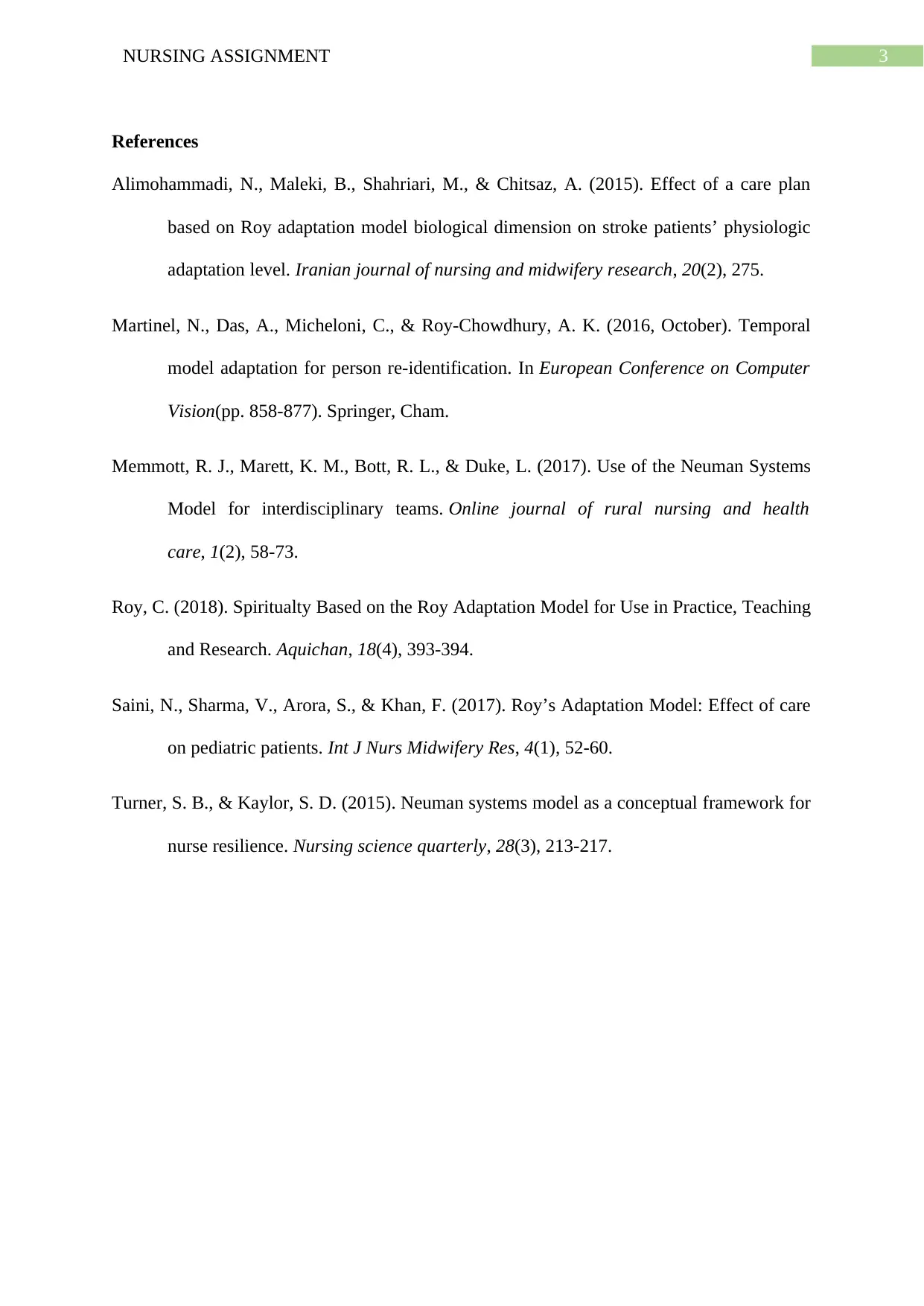Nursing Assignment: Applying Roy Adaptation & Neuman System's Models
VerifiedAdded on 2023/01/20
|4
|973
|87
Homework Assignment
AI Summary
This nursing assignment analyzes the case of Sgt. Eddie, a patient with a traumatic brain injury and a broken leg, through the lens of the Roy Adaptation Model and the Neuman System's Model. The assignment explores how the Roy Adaptation Model can be applied to provide effective treatment and incorporate the patient's values, focusing on the six steps of the model. It discusses the concept of self-concept in relation to Sgt. Eddie's condition and the importance of patient interaction within the care process. The assignment also identifies and categorizes stressors affecting Sgt. Eddie according to the Neuman System's Model, including intrapersonal, interpersonal, and extrapersonal stressors, and outlines a plan of care considering physiological, psychological, spiritual, socio-cultural, and developmental aspects. The assignment references several research articles to support the application of these nursing models in patient care.
1 out of 4











![[object Object]](/_next/static/media/star-bottom.7253800d.svg)